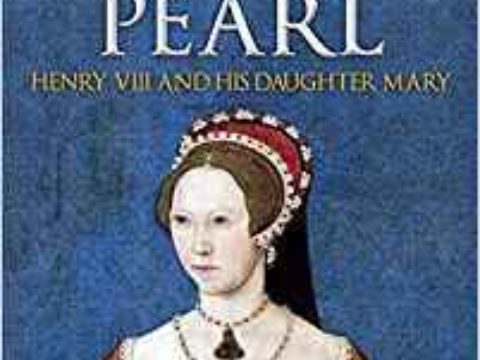Thomas Howard, 2nd Duke of Norfolk: Life Story
Chapter 3 : Turbulent Times
At this point, we encounter the tangle that formed the rules of inheritance. Anne inherited the earldom of Norfolk, which had been created to pass to heirs general – that is, the common law heirs of the original recipient, regardless of gender, but she could not inherit the dukedom, which had been granted to heirs male, for lack of which it lapsed. According to law, if Anne died married but childless, her husband would retain a life-interest in her estates, which, on his death, would pass to her heirs, who were the descendants of the 2nd Duke’s sisters – Thomas’ grandmother, Margaret, and her sister, Isabel. Isabel’s descendants included the Berkeley family, and also the sons of Edward IV’s wife, Elizabeth Woodville, by her first marriage.
The availability of such a great heiress was a mouth-watering prospect for any nobleman with a son to marry and Anne might have been a very suitable bride for Thomas’ first son, another Thomas, thus reuniting two branches of the family but Edward IV swept in and claimed the little girl for his Richard, Duke of York. So far, so normal – kings had first bite of the cherry, and Edward was acting within the law and customary practice. He would be able to provide handsomely for his second son and grandchildren without alienating any crown lands. But the plan miscarried when Anne died in November 1481, still only nine years old, and without, of course, consummating her marriage.
There was a strong case for an unconsummated marriage to be considered imperfect, and for Anne’s inheritance to pass immediately to her natural heirs. Edward, however, had other ideas, and he determined to keep her lands in his own family. In January 1483, the king required Parliament to pass an act, not granting Anne’s widower the life-interest, which, although it was a stretch, was a possible interpretation of the law, but assuring the whole inheritance to Richard and his descendants, and failing that, to Edward’s own descendants. At a stroke, the Howards, so faithful to Edward IV, were deprived of a significant portion of the wealth that, legally, was theirs.
We can suppose that this loss of their inheritance was a major grievance – and it may well have influenced both Thomas and his father over the months that followed. Edward IV died on 9th April 1483. His twelve-year-old son was proclaimed Edward V, and the council gave orders for him to be brought from Ludlow, where he had been presiding as Prince of Wales, to London for his coronation. En route, he was intercepted by his uncle, Richard, Duke of Gloucester, who accompanied the boy to the capital. As was customary, Edward entered the Tower of London to await his coronation. Not long after, he was joined by his brother, the aforementioned Richard of York, despite the misgivings of their mother, Dowager Queen Elizabeth Woodville. John Howard, who had been a close friend of Gloucester’s for some time, was amongst the delegation sent to put pressure on the queen, who had taken sanctuary at Westminster, to release her younger son to their care.
Between mid-May and early June, confusion reigned, initially caused by argument over whether a regency council should hold power, or whether Richard of Gloucester should be Lord Protector. On 13th June, there was a contentious council meeting at the Tower of London. Thomas was sent to summon William, Lord Hastings, a close friend of the late Edward IV’s and one of Gloucester’s early supporters, but who now appeared to be rejecting the idea of Gloucester as protector. According to the later chronicler, Edward Hall, whilst Thomas and Hastings were en route to the Tower, Hastings stopped to talk to a priest. Thomas chivvied him on with the words ‘What, My Lord? I pray you come on. Wherefore talk you so long with that priest? You have no need of a priest yet.’ And then he laughed. A few hour later, Hastings had been summarily beheaded over a log in the Tower precincts - without the solace of a priest.
A sermon was preached in the City of London, proclaiming that Edward IV’s marriage had been invalid and that his children were illegitimate. Following this, a delegation of his friends and supporters requested Richard of Gloucester to take the throne. Three days later, John Howard was granted the dukedom of Norfolk, and half the Mowbray lands. Perhaps he knew that Richard of York would not be needing them. Thomas, now forty, and described by Polydore Vergil as ‘a flourishing young man of distinction’, was created Earl of Surrey, and at the coronation of Richard and his wife, Anne Neville, on 6th July 1483, he bore the Sword of State. Edward IV’s sons were never seen again.
Thomas could anticipate high office under Richard, and he was a prominent figure at court. In July, he attended Richard on a visit to Magdalen College, Oxford, and he accompanied king and queen on their progress to York, where their son, Edward of Middleham, was invested as Prince of Wales.
Later that summer, he proved his loyalty by suppressing the rebellion of the Duke of Buckingham, which broke out later in 1483. This loyalty was liberally rewarded when, in September of that year, the aged Katherine Neville, Dowager Duchess of the 2nd Mowbray Duke of Norfolk finally died, releasing her jointure lands. They were split between John Howard, and the other heir, William Berkeley, Earl of Nottingham. Not surprisingly, any rights of the Queen Elizabeth’s son, the Marquis of Dorset, were overlooked. In addition, Richard granted Thomas £1,100 per annum out of the revenues of the duchy of Cornwall – a munificent sum.
Thomas Howard, 2nd Duke of Norfolk
Family Tree


